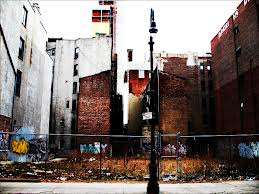Cities mimic the characteristics of a living organism but the intervention of forces beyond the population of the city will have an affect on how the city evolves and changes. The growing, and circulating population of a city would be the catalyst of its natural evolution. The connection of the city in a greater global context, the intervention of state powers and the effects of the economic influences at varying scales alters, expands, and minimizes the natural evolution a city would have because of its citizens alone.
Cities have the capacity to have a permanence to them that manifests itself in the population. That does not mean that the city can exists without the physical city. Instead this is saying that evolving city is really the evolving populace that inhibits and manifests the physics city. The physical city is still the most tactual presence of the city in that it supplies the common context for the populace to exist in. Just as Stehphen Johson states in “Pattern Match”, “Certain elements of urban life get passed on form generation to generation because they’re associated with a physical structure that has its own durability. (Johnson 105)
The physical city is such a strong force on the populace that it can stand on it’s own to incubate evolution. This evolution in many case is strong enough to create cities that can be self-sufficient. But cities none the less go through the cycles and patterns that Johnson refers too. In some cases cities die out in other cases cities thrive. The catalysts to these changes of pace of self-sufficient cities is going to be outside effects that are greater then the scale of the city. These outside effects disrupt the natural pace of the city. The natural change a city would go through is altered. This alteration is the breading ground for what Michael Hensel , Achim Menges and, Michael Weinstock refer to as “Emergence.”
The same way that the three propose that the intervention of a new high rise-tower in a city will alter the evolution of the city by impacting the individual, social, political and economic influence effect the city the same way the high rise effects the individual. (Hensel 7) The larger scaled force effects the evolution of the smaller scaled entity.
When a nation enter a period of economic turmoil the city is effected. Those that once maintain a certain lifestyle now have their lifestyle threatened. This changes the nature of the populace and the culture surrounding that populace. This push people into different soci-economic classes. Certain group shrink and others expand in a way that is beyond the normal progression. This can be fast and turbulent. It creates the environment for the emergence of methods and systems. “When very large numbers of people are centred in one place,the resource needed to maintain the environmental quality of the public and private spaces increase exponentially” (Hensel 9).
The significance of this evolution is that this is the way the ad-hoc nature of the informal and often destitute portions of a city develop.
Michael Hensel , Achim Menges , Michael Weinstock. “Emergence in Architecture”
Stephen Johnson “Pattern Match”
